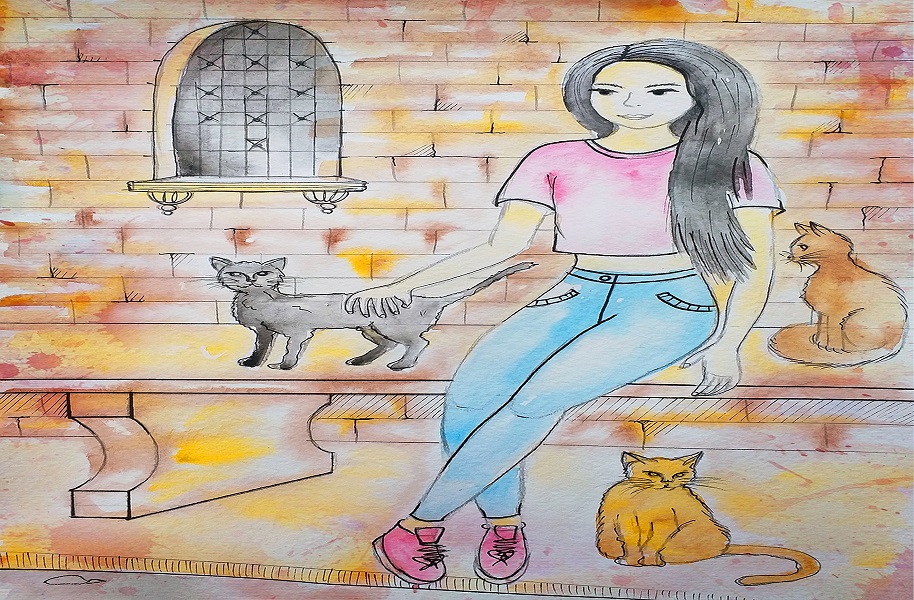Titles of novels fascinate me. I always try to find out in the course of reading the book, what the title relates to or why the novel is named so.
Sunlight on a Broken Column by Attia Hosain held the same fascination for me. I have now read it thrice: first in undergraduate, then as part of the syllabus during post-graduation and recently last year to compare and contrast it to other similar novels that chronicle female growing up experiences such as The Women’s Courtyard by Khadija Mastur and The Hussaini Alam House by Huma R. Kidwai.
The novel is set in Lucknow in pre Independence era and is told from the point of view of Laila, the 15-year-old protagonist born in a wealthy landed taluqdar family which is headed by the patriarch, Baba Jan. Laila is an orphan who lives with her grandfather, Baba Jan, and her aunts, Majida and Abida. The novel begins with the failing health of Baba Jan. It immediately beckons the reader into a realm of sadness and alerts them to a significant change in the making: that of the past and all that is old slowly disappearing.
While living with Baba Jan and her aunts, Laila’s education is given more importance according to the wishes of her late father, who believed in the cause of women’s education. She grows up in a liberal environment where she is allowed to study yet is also confined to certain spaces and knows that the older female relatives follow a different code of honour and ethics especially purdah.
Laila’s life thus straddles a tradition bound world as well as one that is slowly opening up avenues for women. She develops a habit of reading, and later gets involved ideologically with the Independence Movement. She is juxtaposed with Zahra, her cousin and Majida’s daughter. Zahra is brought up to be a ‘good’ woman, to be married and be an ideal wife. Laila struggles with these ideas and is unable to reconcile or compromise with a few traditional expectations especially gendered ones.
Despite being bestowed with an education, Laila is expected to live by certain religious codes of conduct. Certain codes are not imposed on her very strictly; yet certain other expectations are upheld. The latter is true when it comes to her decision to marry Ameer who is considered as a good match by her family because of his unemployment and lower class status. Her Aunt Abida ostracised Laila after this marriage, despite their strong and loving bond based on mutual respect.
Marriage and education are crucial themes and debates that shape Laila’s understanding of the world. While some of the debates are dated, many are sadly relevant to any girl’s experiences today as well, particularly the family’s role in choosing a groom for her.
These debates also show us how education for girls was perceived then and promoted: not a means in itself but an end to developing a sophisticated wife who could match the intelligence of her husband. Education for a girl was dependent on how it would help the spouse too. It had its own terms and conditions and was not seen as fundamental right by itself.
The influence of culture, its fading, and the idea of the now popularised stereotype of tehzeeb of Lucknow is suffused in the narrative. The rich and accurate portrait of a life and culture that Hosain herself was part of is the highlight of Sunlight on a Broken Column.
So, what does the title mean?
The title cites the T.S. Eliot’s poem, The Hollow Men. These are the lines that form part of the epigraph of the novel:
Eyes I dare not meet in dreams
In death’s dream kingdom
These do not appear:
There, the eyes are
Sunlight on a broken column
There, is a tree swinging
And voices are
In the wind’s singing
More distant and more solemn
Than a fading star.
The title could suggest therefore that the novel itself casts a glow, a ray of sunlight on this fading way of life be it the joint family, the sense of respect for family members, or even the language and the landed ownership. The broken column represents the fading culture.
The novel is essentially a tribute to that high class culture that no longer exists. It is steeped in nostalgia. It would not be a farfetched guess to state that the writer herself was engaging in remembrance of her own experiences and past life while writing Sunlight on a Broken Column, which is also the only novel that Hosain ever wrote in her lifetime.



















